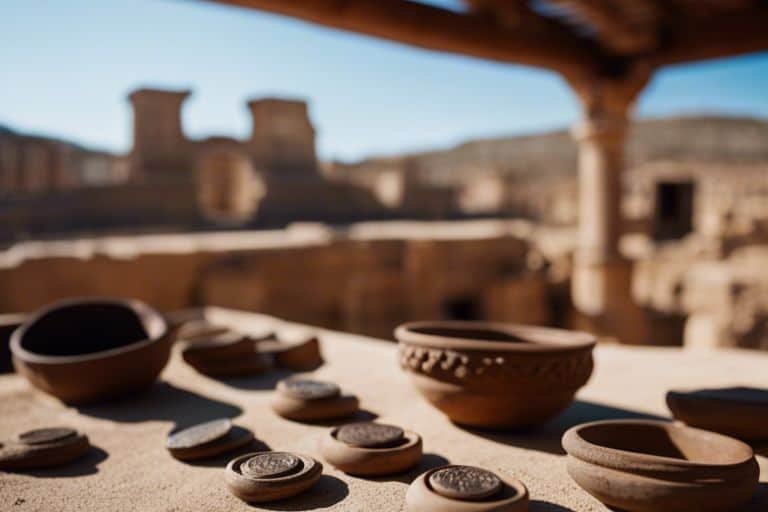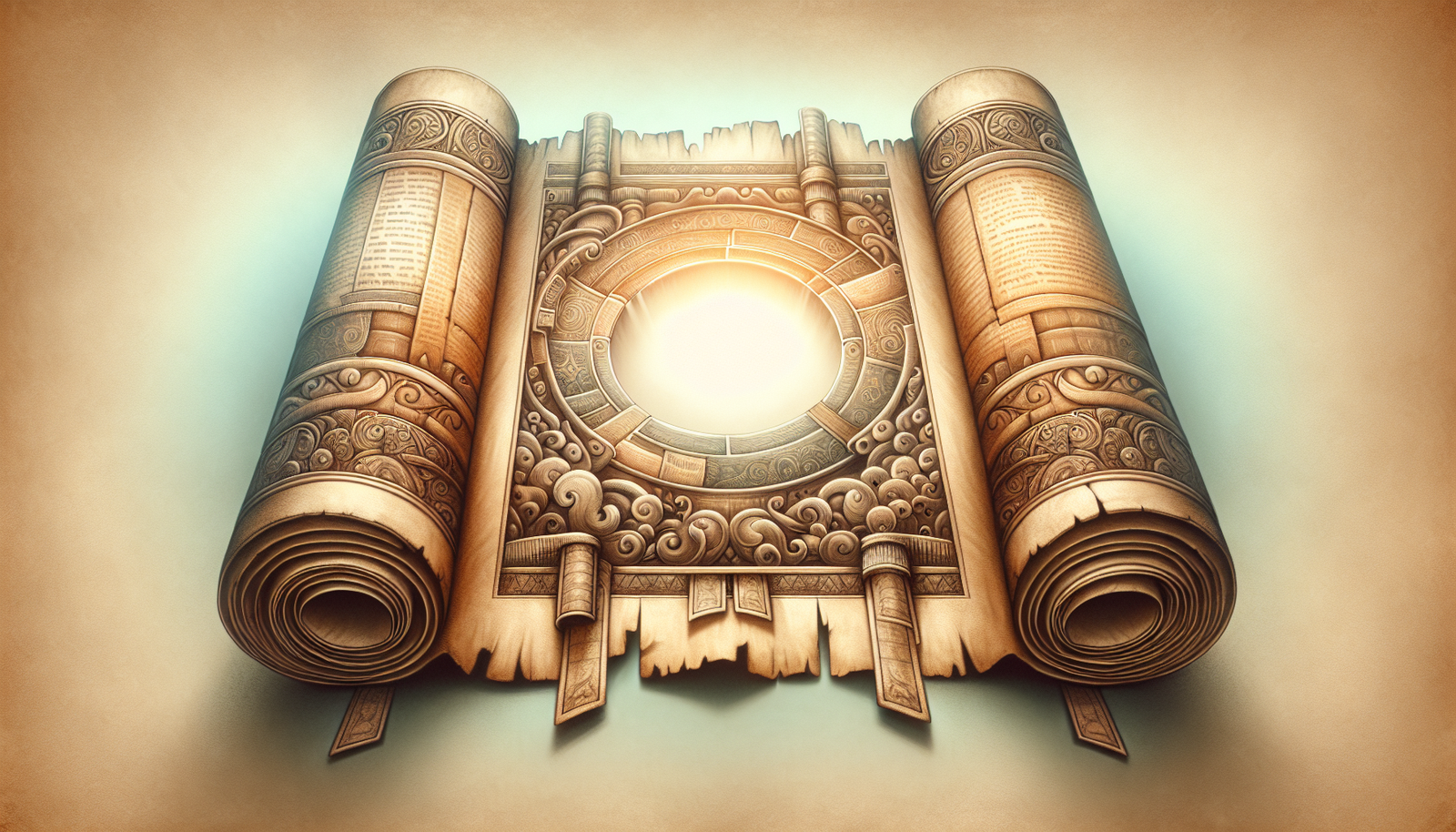Over the centuries, Biblical archaeology has unearthed rare and fascinating artifacts that provide valuable insights into ancient civilizations and Biblical events. These discoveries have helped piece together the past and validate the stories and accounts found in the Bible. From ancient scrolls to well-preserved artifacts, each find offers a glimpse into the history and culture of people mentioned in the Bible. Join us as we explore some of the most significant and remarkable discoveries in Biblical archaeology.
Key Takeaways:
- Rare Biblical Artifacts: Biblical archaeology has unearthed rare and important artifacts that shed light on the history and context of the Bible.
- Connecting the Past and Present: These discoveries help to piece together the past and provide valuable insights into the historical and cultural background of biblical narratives.
- Enhancing Understanding: By studying these rare finds, scholars can deepen their understanding of the events, people, and places described in the Bible, enriching our knowledge of ancient history.
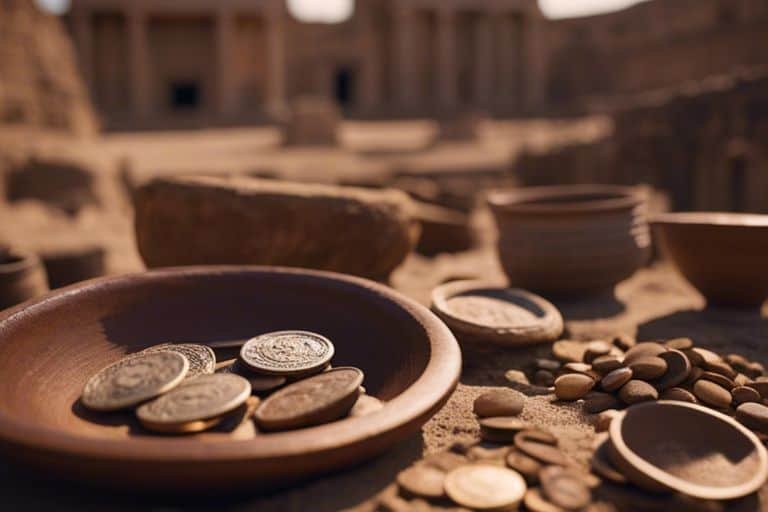
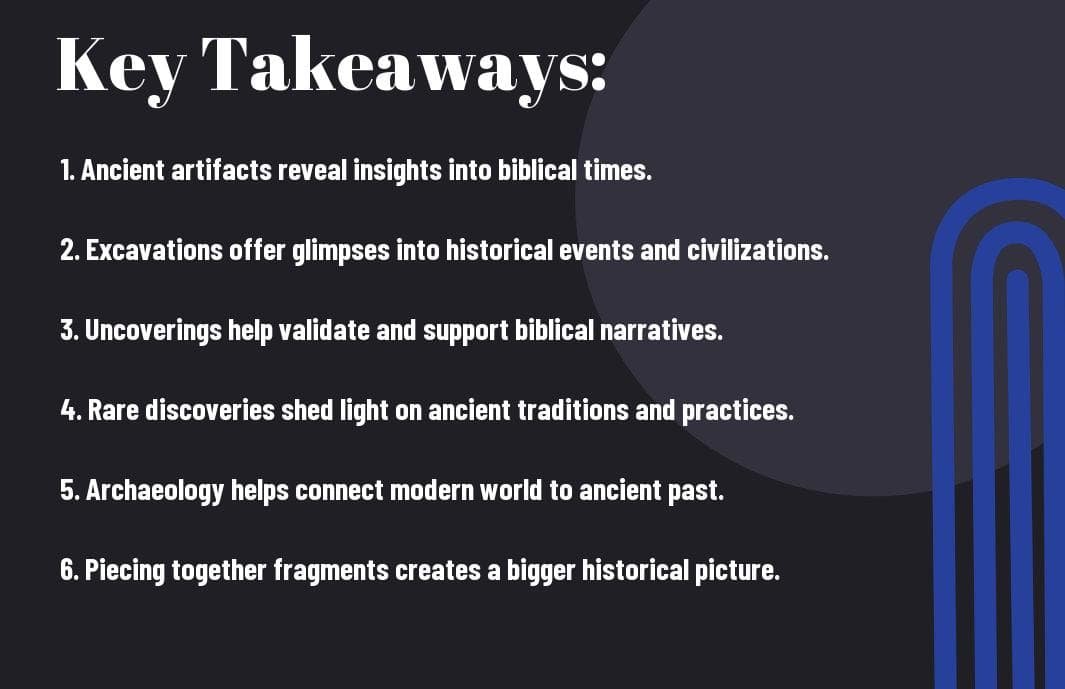
The Age of Kings
Findings from the United Monarchy
You are about to investigate into the fascinating world of biblical archaeology, where each discovery sheds light on the stories and events from ancient times. An important finding from the United Monarchy period is the Tel Dan Stele, a stone slab inscribed with Aramaic text mentioning the “House of David,” providing tangible evidence of King David’s dynasty.
Insights from the Divided Kingdoms
Findings from the Divided Kingdoms period offer valuable insights into the political and religious landscape of ancient Israel and Judah. Excavations at sites like Samaria and Megiddo have uncovered evidence of the military campaigns and power struggles that characterized this turbulent time in biblical history.
Plus, recent discoveries of ostraca, ancient pottery fragments inscribed with messages, have revealed details about daily life and administrative practices during the Divided Kingdoms. These insights help scholars piece together a more comprehensive understanding of the social and political dynamics of the era.
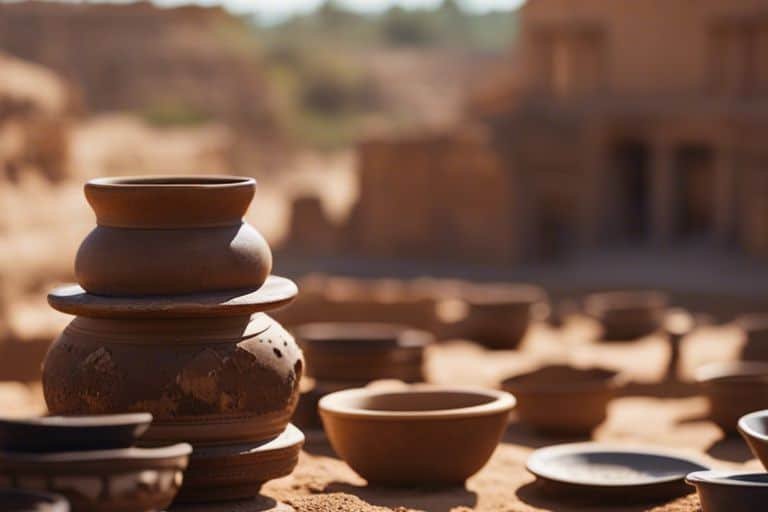
The Prophets and the People
Artifacts Related to Prophetic Texts
For centuries, archaeologists have uncovered a wealth of artifacts that shed light on the lives of the prophets and the people they spoke to. From clay tablets bearing prophecies to seals belonging to royal officials mentioned in the texts, the artifacts provide a tangible connection to the biblical narratives.
Daily Life in Ancient Israel and Judah
Artifacts relating to daily life in ancient Israel and Judah offer a fascinating glimpse into the routines and rituals of the people living during the time of the prophets. Excavations have unearthed household items, agricultural tools, and religious artifacts that help piece together a more complete picture of daily life in this region.
Texts discovered alongside these artifacts reveal insights into the social structure, religious practices, and political tensions of the time. While some texts confirm the harsh realities of ancient life, others showcase the resilience and faith of the people, offering a multifaceted view of the societies that the prophets sought to guide and critique.
The Exile and Return
Evidence of Babylonian Captivity
Now, the Babylonian captivity, a significant period in ancient Israel’s history, is well-documented in archaeological findings. Excavations in Babylon have unearthed clay tablets with records of the captivity, including details of the Israelites’ lives during their exile. These tablets provide crucial insights into the daily struggles and experiences of the captives.
The Archaeology of Rebuilding
Babylonian captivity not only marked the end of an era but also set the stage for the eventual return and rebuilding of Jerusalem. A wealth of archaeological evidence from this period showcases the efforts put into reconstructing the city and its structures. Ruins of walls, gates, and public buildings serve as a testament to the Israelites’ determination to revive their homeland.
A closer look at the archaeological remains reveals the sheer scale of the rebuilding projects undertaken after the exile. From the reconstruction of the Temple to the refurbishment of city walls, the returnees spared no effort in restoring Jerusalem to its former glory. The layers of history embedded in these archaeological finds offer a vivid glimpse into the resilience and faith of the ancient Israelites.
Texts and Contexts
Deciphering Ancient Manuscripts
After unearthing ancient manuscripts in archaeological digs, scholars face the complex task of deciphering and translating these texts. These manuscripts, sometimes written in fading ink on delicate parchment, hold valuable insights into the beliefs, practices, and daily lives of ancient civilizations. Deciphering these manuscripts requires expertise in ancient languages and scripts, as well as a deep understanding of historical context.
Matching Scriptural Citations with Archaeological Sites
For researchers in biblical archaeology, a crucial aspect is matching scriptural citations with archaeological sites. By aligning biblical references with physical locations and artifacts, scholars can reconstruct the historical and cultural contexts of the events described in the Bible. This process not only validates the authenticity of the biblical accounts but also provides a deeper understanding of the ancient world.
On top of that, this process can reveal inconsistencies between biblical narratives and archaeological evidence, sparking debates and discussions within the academic community. This critical analysis helps researchers reassess traditional interpretations and uncover new perspectives on the intersection of history, literature, and faith.
To wrap up
Considering all points, it is evident that the field of Biblical archaeology continues to offer valuable insights into ancient history and the world of the Bible. Rare finds such as the Dead Sea Scrolls, ancient manuscripts, and artifacts shed light on the everyday lives of ancient civilizations, enriching our understanding of the past. These archaeological discoveries not only validate the historical accuracy of biblical accounts but also provide a deeper context for interpreting the scriptures. As researchers continue to unearth new evidence and piece together the puzzle of the past, the significance of Biblical archaeology in reconstructing our collective heritage remains undeniable.
FAQ
Q: What is Biblical archaeology?
A: Biblical archaeology is a field of archaeology focused on studying and discovering artifacts and sites related to events, people, and places mentioned in the Bible.
Q: How do archaeologists piece together the past in Biblical archaeology?
A: Archaeologists use various methods such as excavation, analysis of artifacts, carbon dating, and historical records to piece together the past in Biblical archaeology.
Q: What are some rare finds in Biblical archaeology?
A: Rare finds in Biblical archaeology include ancient inscriptions, coins, pottery, seals, and architectural remains that provide valuable insights into ancient biblical times.
Q: Why are rare finds important in Biblical archaeology?
A: Rare finds in Biblical archaeology are important because they help verify and illuminate biblical stories, characters, and events, providing tangible evidence of the historical accuracy of the Bible.
Q: What can we learn from rare finds in Biblical archaeology?
A: Rare finds in Biblical archaeology can help us better understand the daily life, culture, religious practices, and historical context of the people and events described in the Bible, enriching our knowledge of ancient civilizations.
